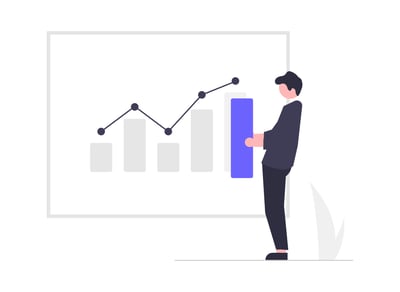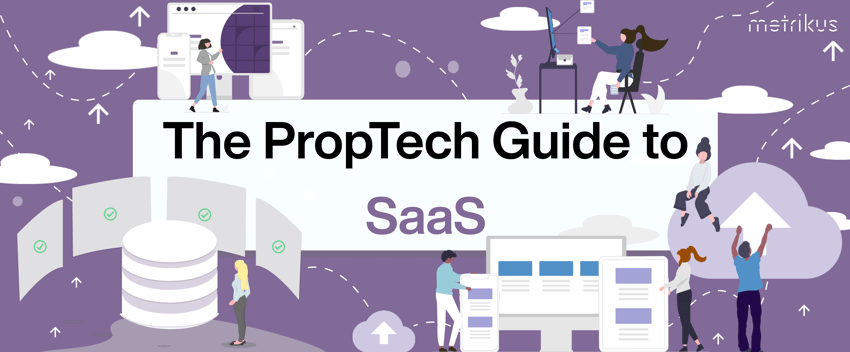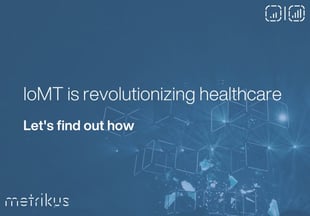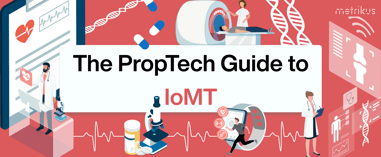What is SaaS? 101 guide to software as a service
There are so many acronyms out there that it can be hard to keep up with them all. That’s why we like writing easy-to-read content that cuts out the confusion and gives you all the information you really need.
Today’s topic is one we talk quite a bit about here at Metrikus: SaaS. SaaS stands for software as a service and is pronounced ‘sass’, for anyone wondering.
If you’re completely unfamiliar with SaaS as a concept, you might want to start at the beginning to get to grips with the basics. If not, feel free to use the contents on the left to skip to the bits that you’re most interested in.
And you know the drill – if you have any questions or suggestions for things for us to add, please don’t hesitate to get in touch with us.
Contents
- What is the history of SaaS?
- Why has SaaS increased in popularity?
- What actually is SaaS?
- How does SaaS work?
- What is the difference between SaaS, IaaS and PaaS?
- An overview of IaaS
- An overview of PaaS
- Other cloud computing models
- SaaS for small businesses
- SaaS for enterprise
- B2B and B2C SaaS
- SaaS and the PropTech industry
- SaaS tools we use at Metrikus
- Can I customize SaaS tools?
- Who owns my SaaS data?
- Is my data safe in the cloud?
- What happens if my vendor goes out of business?
- How does SaaS pricing work?
SaaS: the basics
SaaS might seem like a slightly confusing, technical topic, but don’t worry – we’re bringing it back to the basics.
What is SaaS?
SaaS stands for software as a service, and as the name suggests, it means that software is hosted by a third-party provider and delivered to customers over the internet, as a service.
It’s a cost-effective alternative to the old model of making a one-off purchase of software that needed to be hosted, implemented, and maintained by buyers themselves.
SaaS products are usually aimed at business users but there are also some products that have become popular with individual consumers, like note-taking app Evernote and personal budget tracker Mint.
In business settings, users access software from a service provider rather than from their company’s own data centre. Microsoft 365 and Salesforce are both very well-known examples of SaaS that had been previously hosted and distributed by businesses’ private data centres.
What is the history of SaaS?
In a 1961 speech to Massachusetts Institute of Technology (MIT) students, renowned computer scientist John McCarthy boldly claimed that “computation may someday be organized as a public utility”.
At the time, it sounded pretty implausible to those listening. But over 50 years later, there are loads of extremely successful companies and start-ups based on a shared resource of computing power – exactly as McCarthy predicted.
While the concept has been around for some time, the web-based technology needed to facilitate SaaS started to mature in the late 1990s. And that’s when companies like Salesforce – founded specifically to create cloud software – began to offer traditional enterprise solutions like customer relationship management (CRM) through a SaaS model.
Why has SaaS increased in popularity?
At first, the enterprise software world didn’t take SaaS particularly seriously. But in recent years there has been a huge increase in SaaS adoption, with a whole new set of businesses using software for the first time.
There are lots of factors that have led to the rise of SaaS, including:
- Increased access to high speed internet connections
- Standardization of digital technologies
- Growing popularity and usage of web interfaces
- Widespread adoption of mobile devices
- Rise of remote working
SaaS has shown its resilience throughout the COVID-19 pandemic, and it’s becoming clearer and clearer that this model of cloud computing is here to stay.

How does SaaS work?
The SaaS delivery model is enabled by a multitenant architecture, which literally means it can serve multiple tenants (groups of customers) at once, from a single physical server.
Each user or business has their own version of the application, with their own data, customisations, data and access controls. But it all comes from a shared code base that can be updated and maintained centrally.
SaaS means that the software can be purchased by individuals or companies and paid for on a monthly or annual subscription basis per ‘seat’. This is often a better option than having to make a large upfront investment in a permanent license, as this can involve a lengthy implementation and years of maintenance, upgrades, and support contracts.
It’s easy to access SaaS on demand, from anywhere via a web browser, desktop computer, or mobile device.
SaaS: the pros and cons
SaaS is becoming incredibly popular, with the market currently estimated to be worth 145.5 billion US dollars. But like all forms of cloud computing, SaaS comes with its own unique set of advantages and disadvantages.
What are the advantages of SaaS?
1. It’s accessibleA big advantage of SaaS applications is that they run through an internet browser, so you can use any operating system to access them.
There’s no need to worry about compatibility, as whether you’re on a Windows, Mac or Linux machine – or even a tablet or mobile device – it’s easy to access the software.
Applications are usually designed to be mobile-friendly, and can be used any time, anywhere. This is particularly useful with the recent rise in remote working.
2. It’s easy to update
Another key advantage of SaaS applications is that because they run in the cloud, the vendor can update their software centrally without adversely affecting business operations for users.
This is very different to on-premises software tools, which often need a degree of compatibility and endpoint security testing before even routine updates and patches can be applied.
All of this means that SaaS speeds up the development cycle and allows users to access new features far more quickly, all while ensuring security updates are applied as soon as possible.
3. It’s cost-efficientOne of the biggest selling points about SaaS is that there’s no huge initial investment.
This means that smaller businesses can access software tools through SaaS-based cloud applications that originally only huge companies could afford. This is also a big advantage for vendors as it widens their target market.
4. It’s scalableAccess to SaaS is usually a per-seat, per-month arrangement, so a business only takes on as much as it needs.
This makes it incredibly scalable – if you need to add more users to your service or take any away, you can just adjust your billing plan accordingly.
5. It reduces the risk of data lossWith SaaS, data is routinely saved in the cloud and users can switch between devices without losing any data.
This is another big bonus over on-premises data storage as it removes the need to invest in reliable backup solutions to mitigate the risk of hardware crashes.
6. It makes it easy to analyze dataBecause everything is run through a centralized platform, it’s easy to capture and analyse data.
Reporting and intelligence tools can provide valuable insights into business operations, helping to improve efficiency and streamline workflows.
What are the disadvantages of SaaS?
1. It requires an internet connectionWe know, we know – we literally just listed this as an advantage. But the fact that SaaS applications need an internet connection can also be problematic if a user experiences connectivity issues.
However, it’s important to note that no system is completely immune to downtime, with on-premises software subject to other risks like electrical outages and hardware failures.
Some SaaS vendors have also developed offline functionality to allow people to keep working even if the internet does go down.
2. It relies on a third-party providerWhen it comes to SaaS, users rely on a third-party to:
- Ensure uptime and availability
- Maintain the security of the service
- Build new features
- Find and squash bugs
This clearly poses both a risk and an opportunity, depending on the quality of the service provider.
3. Portability restrictionsIncreasing reliance on SaaS can also bring restrictions when it comes to portability.
Moving all of your company’s CRM data to a different SaaS provider – or back to a private data centre – is a very big task. This makes it important for users to choose their SaaS provider carefully the first time around.
Saas, IaaS and PaaS
Back in the day, all of a company’s IT systems were on-premises, and clouds were just white fluffy things in the sky.
Today, you can use the cloud for nearly all your systems and processes. Cloud computing is becoming increasingly popular, and many businesses are phasing out on-premises software altogether.
In this section we take a look at some of the main models of cloud computing before delving into SaaS in more depth.
What is the difference between SaaS, IaaS and PaaS?
SaaS sits alongside two other main models of cloud computing: infrastructure as a service (IaaS) and platform as a service (PaaS).
IaaS provides the building blocks for consuming cloud services, like storage, networking, and monitoring. PaaS assembles these building blocks into a more easily consumable software development platform.
Most businesses use a combination of SaaS and IaaS cloud computing service models, and many also engage developers to create applications using PaaS.
An overview of IaaS
IaaS helps companies to build and manage data as they grow. It allows them to pay for the storage and server space they need without having to actually host and manage servers themselves.
Advantages:
- You only pay for what you use and it can be scaled/downsized as needed
- You have complete control over your infrastructure
- There’s no need to buy a physical server or maintain it
Disadvantages:
- IaaS firms only provide the servers and its API so everything else must be configured on your end
- You’re responsible for making sure your apps and operating systems are working properly and are secure
- If any data is lost, it’s up to you to recover it
Examples:
.jpg?width=400&name=5%20(1).jpg)
An overview of PaaS
PaaS lets developers build applications online without having to deal with data serving, storage, and management. It’s the platform where SaaS applications are actually made.
Advantages:
- It’s cost-effective, easy to use and very scalable
- It makes it easy for teams of developers to collaborate
- It’s easy to customize and update apps without thinking about software upkeep on the backend
Disadvantages:
- You only have control over the code of the app and not the infrastructure behind it
- You don’t store the data yourself which can pose a security risk to your app’s users
- You’re limited by the PaaS terms of service, potentially making it difficult to customise how the platform works on your end
Examples of PaaS include:
Other cloud computing models
Thought we’d covered all the acronyms? Believe it or not, there are even more ‘as a service’ options that we thought were worth a quick mention.
- Managed software as a service (MSaaS): where IT professionals support and upkeep their applications
- Desktop as a service (DaaS): where virtual desktop infrastructure is outsourced to a third-party provider
- Database as a service (DBaaS): allows users to access a database rather than download/host it themselves
- Security as a service (SECaaS): where a service provider allows access to their security services as a subscription
- Everything as a service (XaaS): all of the ’as a service’ tools packaged together
It’s clear that the ‘as a service’ model is very popular in the world of tech, and we don’t see this changing any time soon.
Examples of SaaS
Now we’ve got the basics down, we thought we’d have a quick look at some examples of SaaS.
It’s become a very popular model and it’s safe to say there’s lots of variety when it comes to the different ways SaaS can be used.
SaaS for small businesses
Back in the days of traditional on-premises software, it was difficult for smaller companies to access new technologies. This is because they tended to require a big cash commitment upfront, as well as a team of in-house professionals to maintain the software.
Luckily, SaaS has become a complete game changer for small businesses. By making day-to-day infrastructure needs into a monthly expense that can be adapted as a company's needs evolve, lots of SMBs can now afford exciting technology upgrades.
Examples of great, cost-effective SaaS tools for small companies include:
SaaS for enterprise
On the other end of the spectrum, SaaS has also become a valuable approach for enterprise-scale businesses.
These huge companies usually have different people operating across different locations and time zones.
SaaS comes to the rescue by providing the right tools to maintain a holistic, connected way of working. And legacy systems can also be plugged in to make sure that all an organisation’s services are connected, preventing any gaps in reporting and data.
Some of the key features of SaaS for enterprise include:
1. CustomizabilitySaaS software is built using open web-based architecture with low-cost tools that enable software vendors to create, test and introduce new features quickly.
2. FunctionalityEnterprise SaaS must be able to handle large-scale workflows and numerous employees. It’s also essential that it provides the latest smart features to help enterprise customers stay ahead of the game in their respective industry.
3. ReportingThe multi-tenant aspect of SaaS offerings can present potential challenges with creating queries and reports, but when it comes to enterprise companies it’s absolutely essential for them to be able to access and interpret data.
.jpg?width=400&name=10%20(1).jpg)
B2B and B2C SaaS
SaaS also tends to vary depending on whether it’s B2B (business to business) or B2C (business to customer).
B2B SaaS companies usually focus on customer needs that are specific to business owners and management teams. They provide products that help organizations to improve efficiency, including optimizing their marketing, sales, customer service, and operations efforts. Popular examples include:
B2C SaaS companies target people who buy products for personal use. The software can cover a wide range of needs, from entertainment, to personal finance, and even to dating! Examples include:
.jpg?width=400&name=11%20(1).jpg)
SaaS and the PropTech industry
SaaS is becoming increasingly prominent in the PropTech industry.
One of the main reasons for this is that the security of SaaS solutions is now at an all time high, giving users increased confidence to use it across multiple devices.
As well as this, using the SaaS model allows PropTech providers to update their solutions regularly without disrupting the user experience, allowing for easy experimentation and rapid improvement.
SaaS is also able to integrate with other software from third-party providers, allowing users to access several SaaS applications from a single browser. PropTech providers will often use this integration method to partner with other providers whose software solutions complement their own.
For example, property management software can be integrated with rent roll management software and performance data software. This provides users with a much more comprehensive and valuable service.
SaaS tools we use at Metrikus
Being a SaaS company ourselves, we’re always on the lookout for great SaaS tools that we can use to improve the way we work. So we thought we’d let you know some of our favourite tools that we currently use.
We use Slack to message each other, share files, and more recently, send voice notes and make use of the Huddle feature. It’s a great tool and we all enjoy using it – especially when it comes to sending GIFs!
HubSpot is our inbound marketing and sales platform, and we also use it to host our website. We find it invaluable when it comes to attracting visitors, converting leads and closing customers.
This is a tool we only acquired more recently, but it’s already helping us to be much more organized. It’s easy to use and is definitely going to help us to stay streamlined as our team continues to grow.
FAQs
We get lots of people asking us questions about SaaS, so we thought we’d pick some of the most common ones and answer them for you.
Can I customize SaaS tools?
We often hear concerns about the flexibility of SaaS, but most tools on the market are becoming more and more customizable.
It’s often possible to customize the user interface (UI) to change the look and feel of the program, and modify specific things like data fields to change the way you see your data. There also tend to be different features that you can choose to turn on and off as you see fit.
And the great news is, SaaS can often be adapted not just for specific business needs, but also for individual users. For example, you might be able to tweak your own personal workspace to fit your specific preferences.
Back in the day, things were often much more limited, but most SaaS companies now realize they need to be as flexible as possible to attract users. Just do your research and make sure you pick a vendor with the right level of customization for you.
Who owns my SaaS data?
In the vast majority of cases, you still own your data in a cloud-based system.
Service level agreements (SLAs) will confirm your company’s ownership of your data ,as well as your right to retrieve the data at any time.
In fact, if you notice a clause for the vendor to keep ownership of your data, we’d recommend that you don’t sign the SLA.
You should also take a look at these aspects of an SLA carefully:
- Responsibilities of the software vendor for support, updates, and security
- Your responsibilities as a client to notify the vendor of issues in a timely manner
- Guarantees for service, like level of uptime and how a customer can respond to poor service
Is my data safe in the cloud?
Software providers know that customers can be very wary about cloud security, so they work hard to prove how safe data is in their servers. Lots of them use extremely secure public cloud services to deploy and store their software instances and data.
For most companies, data is actually more at risk in-house, where there’s less budget dedicated to security and employees could unintentionally leak data or introduce gaps in security.
SaaS vendors are willing and able to invest lots of money in security, backups, and maintenance.
If you’d like to find out more, check out this useful article with best practices for SaaS security.
What happens if my vendor goes out of business?
Software vendors come and go, but even if you pick one of the unlucky ones, you should still always get to keep your data. Most SaaS providers prepay data centers to make sure their users’ data is accessible, even if something unexpected happens.
Some things you might want ask yourself before settling on a vendor:
- How long has the company been in business?
- Are they growing in customers and employees?
- Do they have a technology roadmap?
And as we mentioned above, you should also make sure your SLA states that you can export your data whenever you want, which is something that should come as standard.
How does SaaS pricing work?
SaaS providers usually use one of many subscription-based pricing models for customers.
- Free or ad-based: a service may be free for users, with the SaaS provider generating revenue through selling advertisement space. There’s often an option to upgrade to a paid tier that doesn't include ads
- Flat rate: customers are granted access to the software's full suite of features for a fixed monthly or annual subscription fee
- Per user: pricing is determined by how many people will be using the service for each subscription, with a fixed price for every user
- Per user tiers: pricing tiers are based on a range of how many active users can exist on a single subscription
- Storage tiers: customers may have free access to a service but will be required to pay for storage if they want to continue using the product after they pass the free limit
- Pay-as-you-go, or usage-based: the more customers use the service, the more they are billed and vice versa
- Per active user: subscribers are billed per user, but only if the user has been actively using the service beyond a defined threshold
- Feature-based tiers: price tiers are determined by the amount of features the subscriber would like
- Freemium: the service will be generally free to use with an entry-level tier, but there will be functional restrictions that are designed to upsell customers to a paid tier
We know that sounds like a whole lot of options, but the most important thing is that SaaS tends to be extremely cost-effective and drive impressive ROIs.
The future of SaaS
How has COVID-19 impacted SaaS?
Many SaaS companies have actually thrived during the COVID-19 pandemic.
As we all started to adapt to the ‘new normal’, there was a huge demand for digital solutions. For example, many companies were forced to move completely to video calls rather than face-to-face meetings.
This meant that SaaS companies like Zoom reaped huge financial rewards – their sales in the last three months of 2020 were up 370% compared to the same period in 2019, hitting $882.5m.
When you think about some of the features of SaaS tools, it’s easy to see why many of them have done so well throughout the pandemic:
- They can be deployed quickly without the need for physical distribution
- They’re cloud-based, eliminating the need for physical storage space
- They can be easily adapted to meet changing business needs
- They’re suitable for multiple remote users around the world
- They’re secure with robust data backups and recovery
Despite this, some parts of the SaaS industry were initially adversely affected by wide-reaching impacts of the virus.
With many companies struggling financially, some SaaS customers asked for discounts or deferred payments, and an average of 11% of software subscriptions were cancelled or put on hold, with overall SaaS spending falling by an average of 4%.
However, as lockdown continued and companies evolved their remote working practices, the use of SaaS tools grew by 17% in May 2020. And as it became more and more clear that restrictions weren’t lifting any time soon, many companies opted for annual rather than monthly subscriptions to save money, contributing to a 25% increase in SaaS spend.
This growth continued into June 2020 with the use of SaaS tools increasing by a further 22%, and spending increasing by 16%.
Will the growth in SaaS continue?
All the signs suggest that the SaaS industry is incredibly resilient and set for further growth – lucky for us, eh?!
One of the big reasons for this optimism is the agile and flexible nature of the SaaS subscription model.
Businesses that respond to changing customer needs – like letting customers temporarily suspend subscriptions – are able to build trust with their customers. And it’s thought that this helps them to grow at three times the rate of those that aren’t flexible, and retain one out of every six customers who are considering cancelling.
Another big factor spurring the growth of SaaS is the rise of remote working. It’s becoming clear that very few employees want to return to the office full-time, and even once the pandemic is over, there will still be a big reliance on working from home. And this makes way for a wide range of tools that support a hybrid working model.
Overall, it seems that things for SaaS businesses are looking very positive, as are things for organizations that are using SaaS tools to their advantage. The big test going forwards is whether software products fall into the ‘strategically essential’ or the ‘nice-to-have’ category.
What is the future of SaaS?
We think that the future of SaaS will see an increased adoption of specialist services, more end-to-end integration, a growing emphasis on relationships between customers and key providers, and ever-more sophisticated, data-driven insights.
Businesses who are already invested in SaaS are likely to adopt integrated, end-to-end solutions that enable them to focus on what they do best. And this will create long-term relationships with service providers and lead to greater innovation, as customers' growing and changing needs are better understood and provided for.
The next generation of SaaS will be about flexibility, simplicity and interoperability. And as a SaaS provider ourselves, we can’t wait to see what the future holds.
Want to find out more about our SaaS platform? Contact us today.




